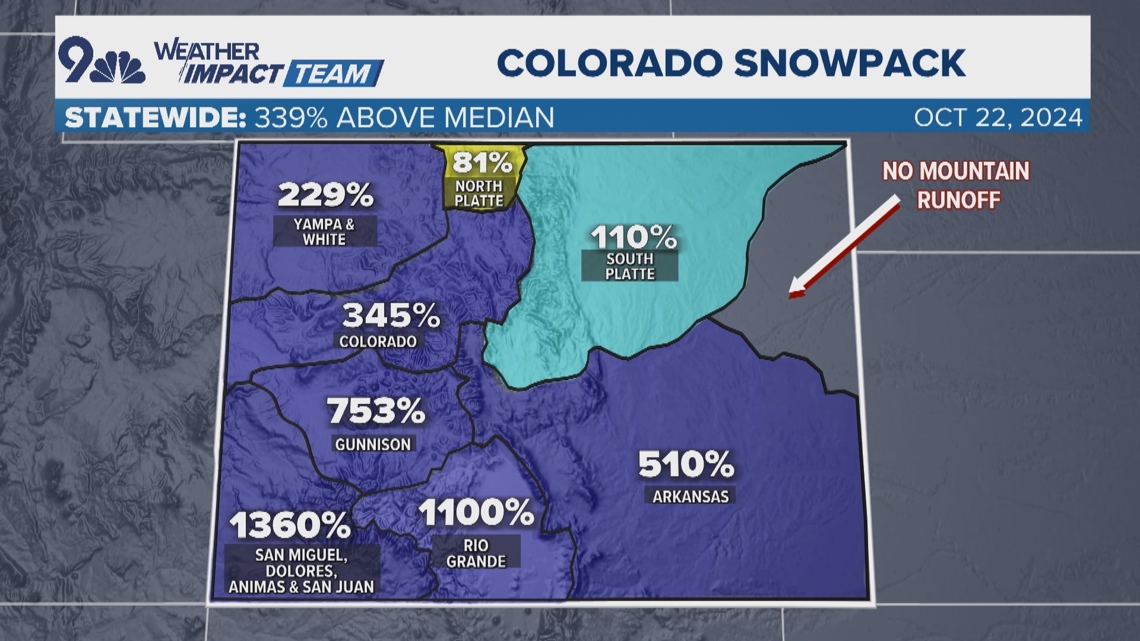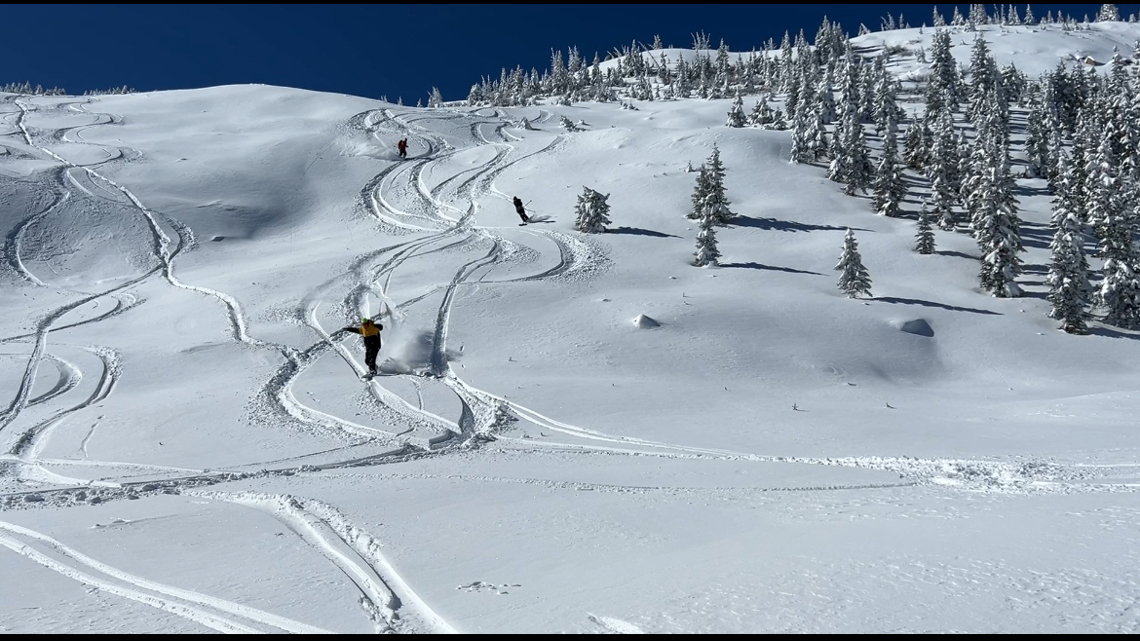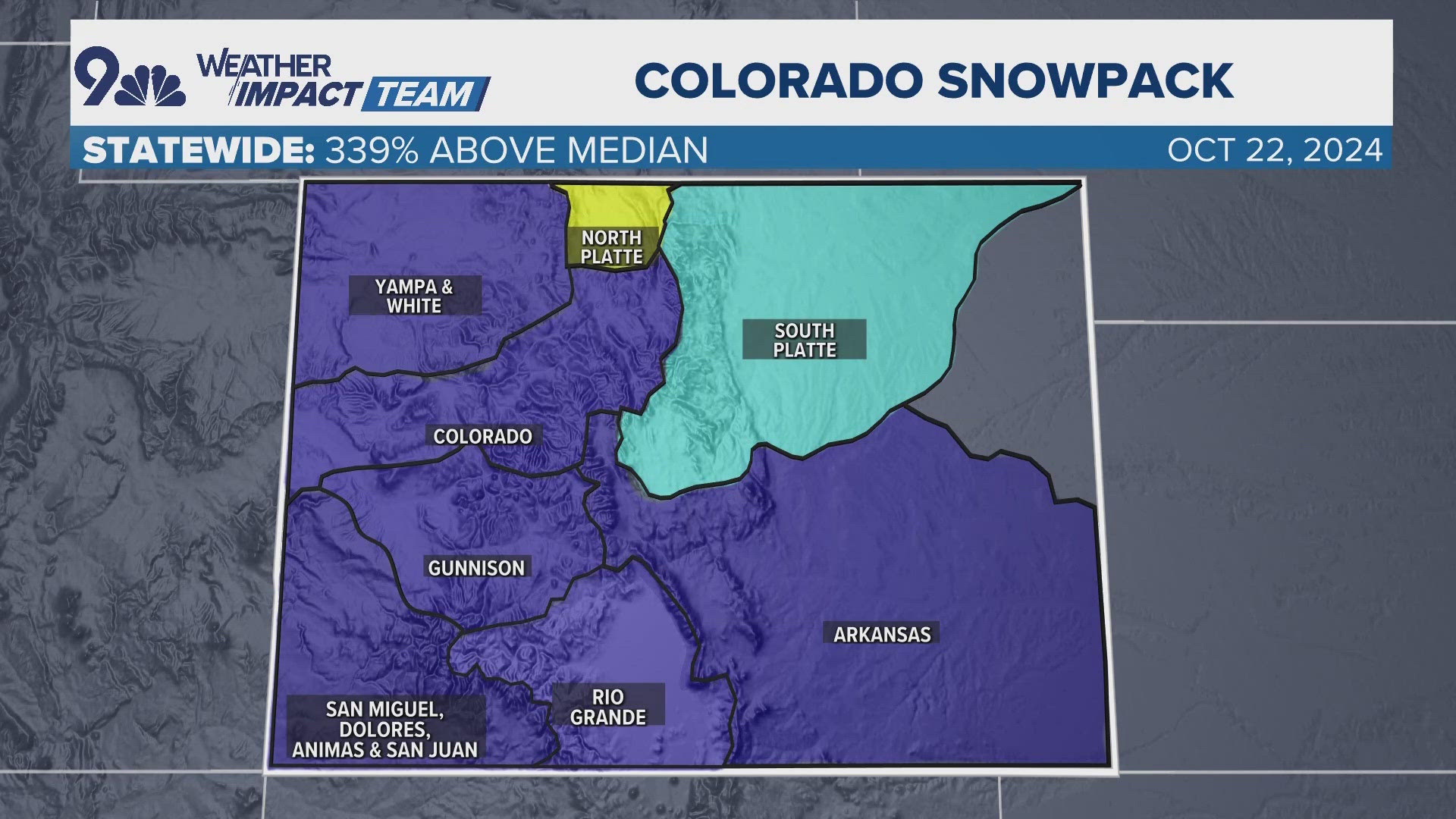COLORADO, USA — A recent weather storm covered mountain peaks with a layer of fresh snow as another mountain snowpack season gains momentum.
About 80% of our drinking water comes from the snowpack in the mountains and there are 115 automated stations spread out through the Colorado Rockies that measure the amount of water that’s in the snowpack every day.
Over the next six months, we can watch our summer water supply build up in real-time. You can follow along by keeping an eye on the daily snowpack update maps put out by the Natural Resources Conservation Service.
On the maps, Colorado is divided into eight different river systems. In each system, the whole basin is shaded in with a color and assigned a percentage even though the snowpack is only measured at the headwaters high in the mountains. A portion of eastern Colorado does not receive runoff from the mountains so there is a blank spot there.


The level of water in the snowpack is shown as a percentage of the median. The South Platte basin, currently at 110% of the median, can also be called 10% above the median.
Southern Colorado’s snowpack numbers are bonkers right now because the averages are very low there and it's early in the season. The snowpack numbers will start to level out as we get deeper into the season because the daily historic average goes up every day until April 8 when Colorado’s snowpack reaches its average peak.


Southern Colorado is also off the charts right now because this last storm was huge. The Colorado ski season officially opened for the winter on Tuesday morning at Wolf Creek Ski area after they received 26 inches of snow over the weekend. Ten to 30 inches of snow fell across other parts of the southern mountains.
Four to 12 inches of snow fell in the northern mountains with the most recent storm and the next significant mountain snow is already showing in the forecast modeling, likely coming just before Halloween.

